Doves
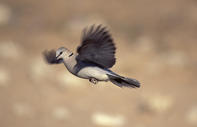
Doves are seed-eaters and are often found feeding on gravel roads in game reserves. The reason for this is two-fold. Roads are open areas where doves are afforded a good view of their surroundings and are able to flee danger if it threatens.
Seeds are also knocked off grass stems onto the roads by the traffic of moving animals and vehicles that use them. Because eating seeds are much like eating dry biscuits without any milk, doves are very water dependent and can be found in droves at waterholes early morning and late afternoon.
Hornbills
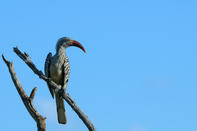
Hornbills, specifically yellow-billed, red-billed and grey, are predominantly insectivores and they especially favour dung beetles. They utilize their huge bills to dig and manoeuvre objects on the ground to access their prey which is usually relatively large in size and sometimes hairy in the form of caterpillars.
The large bill helps them handle their prey at a safe distance away from the vulnerable facial area and eyes. Aside from insects, hornbills are fairly carnivorous catching and eating lizards, nestling birds, bats and rodents. They also eat berries such as those found on the velvet corkwood. The enlarged portion on the upper mandible of male hornbill’s beak is called a casque.
Bee-Eaters
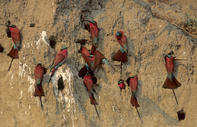
Bee-eaters have tweezer-like bills and wide gapes that they use effectively to snap air-borne insects out of the sky with spectacular aerobatic manoeuvres.
They have long narrow wings, forked tails and small streamlined torsos which all facilitate their acrobatics and small rictal bristles (hair-like feathers on the face) help to channel food into their mouths.
Dangerous insects such as bees are commonly caught and dispatched by beating the prey against a perch until the sting comes free and it is safe to swallow the food.
Cuckoos
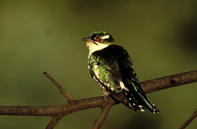
Dark-Capped Bulbuls
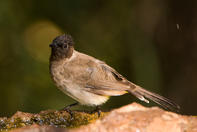
The dark-capped bulbul is a frugivore or fruit eater. It has a solid bill for plucking and cutting fruit which often has a hard rind. Bulbuls tend to move around in groups moving wherever there are fruiting plants.
They have shortened guts that allow seeds to pass through their systems rapidly and when they subsequently deposit the ingested seeds, they facilitate dispersal. Bulbuls will sometimes supplement their diet with nectar.
By Megan Emmett